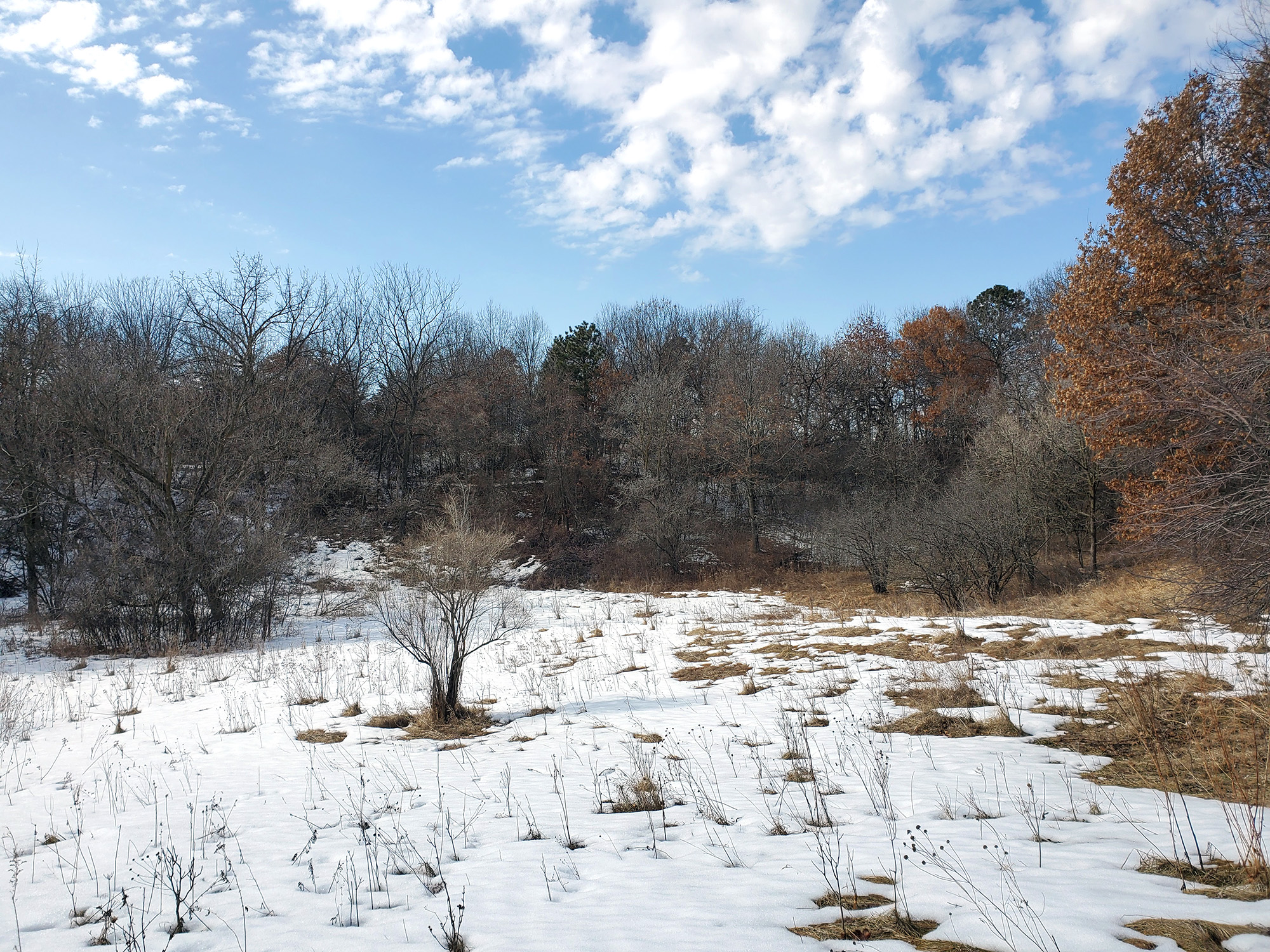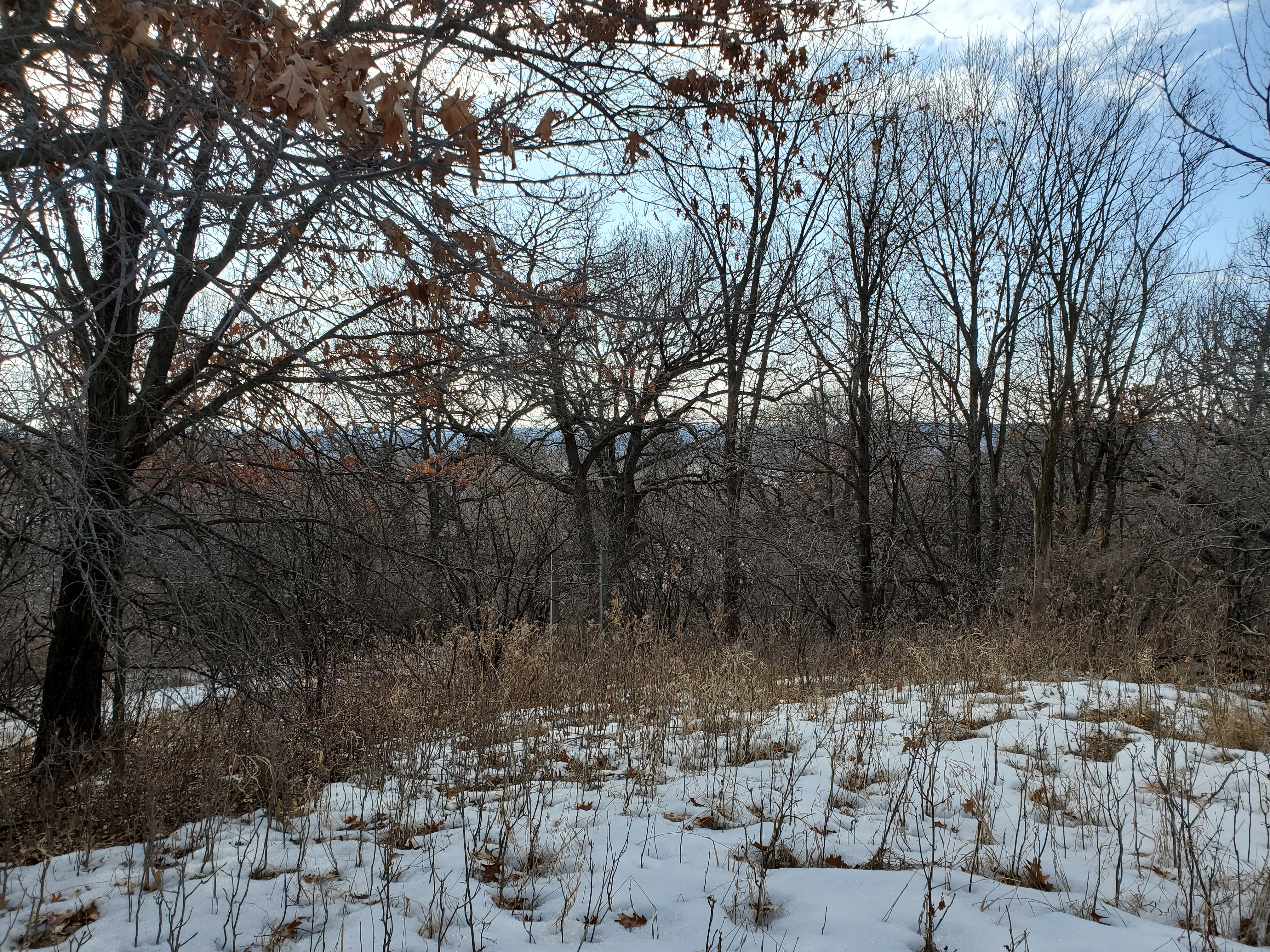Envisioning a restorative future for BTT

Much of the BTT property on St. Paul's East Side is undeveloped oak savanna, one of the world's scarcest habitats.
On the east side of St. Paul, the former juvenile correctional facility known as BTT (previously known as Boys Totem Town) closed in 2019 after more than 100 years of operation. The 72-acre property is owned by Ramsey County. So far, intensive development has been limited to 10 acres of the site; the rest remains open space with blufftop views, rolling hills and a rare oak savanna.
The BTT site also may contain potential archeological resources related to the long history of Dakota presence in the area. A preliminary study commissioned by Wakaŋ Tipi Awaŋyaŋkapi (formerly Lower Phalen Creek Project) and the BTT Land Preservation Group noted a "high potential" for such resources, partially because the blufftop portions of the site have never been developed.
FMR has been working with community partners to bring forward a new vision for BTT: one that includes preservation of the rare habitat along with new uses for the developed area that align with community goals. The process for reuse is just as important as the outcome. The planning process needs to be careful, inclusive and focused on restorative justice. It needs to heal the harm done when this land was stolen from the Dakota and when it was used for incarceration.
Given that BTT operated as a juvenile detention facility for 113 years, special consideration needs to be given to the hundreds of youth and families who were affected by the often-traumatizing practice of separating children from their families and neighborhoods. The correctional system disproportionately affects BIPOC (Black, Indigenous, People of Color) people, and BTT was no exception.
Community partnerships
For the past few years, FMR has been working with partners including the Science Museum of Minnesota, Wakaŋ Tipi Awaŋyaŋkapi (formerly Lower Phalen Creek Project), BTT Land Preservation group, Circle of Peace Movement and many others to open conversations about the future of BTT.
Our partnership has met with many elected officials and other community leaders. And in 2022, we hosted a community dialogue event to gather ideas about what should be next for BTT. Over 100 people shared feedback at the event or online.
Participants strongly favored returning the land to Indigenous ownership. They also wanted future uses to promote racial justice and healing, restore the natural area and recognize the site's historic and cultural significance.
Read the full report from the community dialogue.
Next steps
FMR and our partners have stayed in close touch with county and city leaders throughout this process. Ramsey County leaders have urged the community to be patient as it plans for the future.
The county is right to seek a careful route forward. However, with each year that passes, buckthorn and other introduced species continue to expand through the site's oak savanna. The potential for habitat restoration is still excellent but could become more difficult or costly over time.
The sooner Ramsey County begins engaging the community in this careful dialogue, the sooner healing can begin: healing for the land and healing for those affected by what happened here.

BTT is located on top of the river bluffs. In the past, the river would have been more visible before buckthorn grew into many areas of the site.
Become a River Guardian
Sign up and we'll email you when important river issues arise. We make it quick and easy to contact decision-makers. River Guardians are also invited to special social hours and other events about legislative and metro river corridor issues.